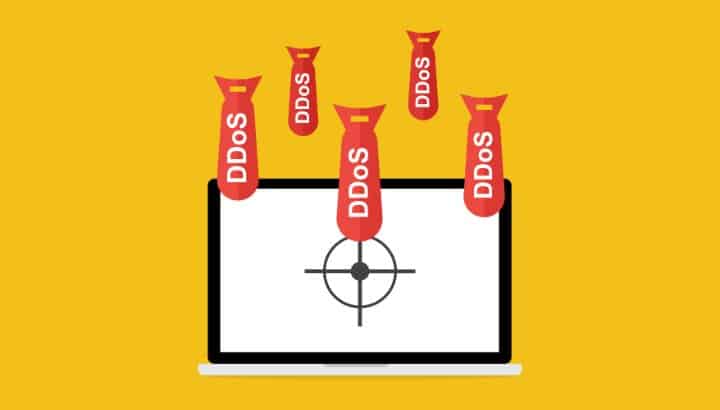The number of DDoS attacks increased by 967 percent in the first quarter of this year compared to the same period last year. These were attacks with a size of 100 Gbps and above, of which the largest was 587 Gbps. That’s what Neustar’s report says.
During a Distributed Denial of Service (DDoS) attack, many computers connect to a single server. This usually happens from different locations around the world. The purpose of the attacker is to make a computer, computer network or service inaccessible or more difficult to reach for the intended customers. To achieve this, billions of connection requests are fired at the target with the help of botnets: networks of hacked PCs, servers or IoT devices.
Attack of 587 Gpbs
The largest attack in the same period last year was one of 345 Gbps, which is more than 70 percent smaller than the 587 Gpbs attack as measured in Q1-2019. Although the largest DDoS attacks are experiencing the greatest growth, the smaller attacks are not lagging behind. According to the research report by Neustar, an American technology company that provides real-time information and analyses focused on the Internet and risks, attacks below 5 Gbps increased by more than 257 percent in the past quarter. That compared to the same period a year earlier.
According to TechRepublic, the attacks that took place in the past quarter used different ports and protocols. This is to locate vulnerabilities, abuse them and change their shape in the course of the attack. More than 77 percent of the attacks in Q1 2019 focused on two or more vectors and 51 percent on three or more. A highly disruptive DDoS threat was the targeted attack on subnets and classless inter-domain routing (CIDR) blocks with the aim of slowing down or stopping network traffic.
Cyber Security Professionals
While a number of tools are available to help companies ward off DDoS attacks, cyber security professionals are indispensable in this regard. Today’s artificial intelligence and machine learning technologies enable us to identify abnormal traffic and patterns. In addition to correlating data in different systems and performing behavioral analyses on users and entities, Rodney Joffe, senior vice president Technologist and Fellow of Neustar, is in charge. But none of these systems work without professionals. They know how to use them and how to interpret the data. In addition, they can also identify and mitigate the existence and location of problems.
Attacks longer and more complex
Kaspersky observed earlier this year that DDoS attacks would actually decrease. However, according to the security specialist, individual attacks would become longer and more complex. This in response to the changing security landscape. According to Kaspersky figures, the duration had more than doubled in 2018 alone. From 95 minutes in the first quarter to 2018 minutes in the last.
Read also: Bad bots responsible for 20 percent of all web traffic
This news article was automatically translated from Dutch to give Techzine.eu a head start. All news articles after September 1, 2019 are written in native English and NOT translated. All our background stories are written in native English as well. For more information read our launch article.